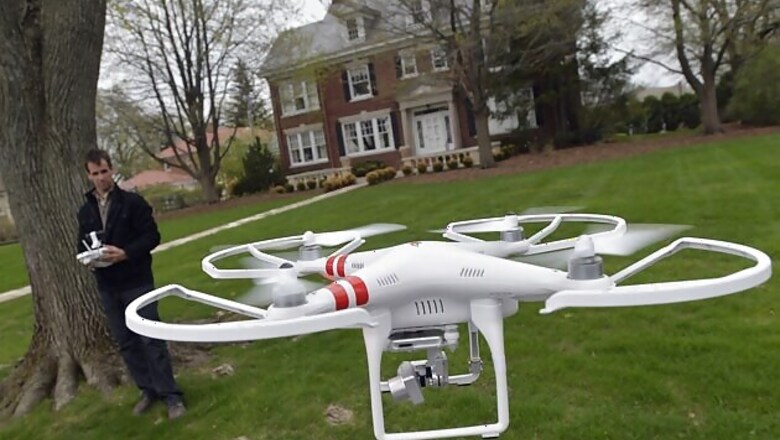
views
New York: Most people think of drones as instruments of warfare, but as the Federal Aviation Administration slowly opens US airspace to commercial use of unmanned aircraft, they are going to become more commonplace.
The first uses are likely to be in remote, sparsely populated areas.
Some of the proposed commercial applications for drones include:
Tackling dangerous jobs
- Searching places that aren't safe for humans, such as looking for survivors in collapsed buildings after an earthquake or inspecting nuclear power plants following a meltdown.
- Helping firefighters battling forest blazes by watching where flames are popping up without risking lives. Helicopters often can't be used because their powerful rotors threaten to spread the fire.
- Helping scientists conduct research inside volcanic ash clouds, hurricanes, tornados or other spots that are not safe for humans.
- Inspecting icy, wind-swept chairlift towers at ski resorts, reducing employee risk and worker-compensation insurance costs.
- Assessing damage for insurance companies after natural disasters, letting them process claims faster. It often takes days until people are allowed into a disaster zone.
- Visually inspecting oil refinery flare stacks, tall towers used to burn off gas when pressure builds too much. The flares give off so much heat that people often can't stand on the ground below, let alone climb the tower unless there is a lengthy and costly production shut down.
Surveying large industry
- Inspecting miles of remote power lines quickly and at less cost.
- Surveying farmers' land, finding bugs or soil that is too dry or lacking nutrients, and then sending the exact GPS coordinates back to a tractor which will apply pesticide, water or fertilizer only to areas in need. Drones could also be used to treat hilly farms or vineyards where tractors often roll over.
- Performing safety checks of remote railroad bridges.
- Inspecting highway overpasses without shutting down lanes of traffic.
Offering better vantage points
- Creating that perfect shot for movie directors.
- Letting media find new ways to cover news and sports. Drones provided aerial television coverage of snowboard and ski jump competitions at the Sochi 2014 Winter Olympics.
- Showing off homes and the surrounding neighborhoods for real estate agents looking to set their listings apart.
- Photographing weddings.
- Providing football teams with unique video angles of their practices to see what is and isn't working.
- Mapping coastal erosion, forest land, archaeological sites or to conduct geological surveys.
Solving unique challenges
- Protecting endangered animals by sending real-time video and thermal images of animals and poachers to wildlife rangers.
- Temporarily expanding cell phone reception at special events like the Super Bowl.
- Searching dense forests or remote mountains for missing hikers.
- Delivering packages might be years away but DHL is currently testing limited, urgent deliveries of medicine on a remote island in the North Sea.




















Comments
0 comment